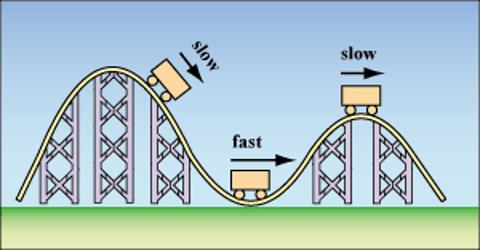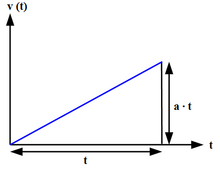 |
| https://goo.gl/iyD3GQ |
Summary:
Energy is a scalar quantity and is measured based on the movement of an object. There are two types of energy that can be measured: potential energy and kinetic energy. Potential energy is the potential magnitude of an object based on its vertical and horizontal position. An example of potential energy is a biker on a hill. At the top of the hill, he has potential energy due to the fact that he is in close proximity of going down the slope and gaining speed/energy. Kinetic energy is the energy in an object while it is in motion. Using the biker on the hill once more, once he bikes down the hill, his potential energy turns into kinetic energy. As he gains speed, his kinetic energy increases along with his speed.
SP5 - Using Mathematics:
This week I used mathematics to find the potential and kinetic energy of an object. This was used in a worksheet given to us with the intent to understand both types of energies. While we were working on it, we found that the formula for potential energy was PE = m x g x v. In other words, the formula for potential energy is mass times gravity times height. To apply this formula we were given scenarios such as finding the potential energy of a 3 kg brick loaded onto a seat-top 0.45 meters high. We plugged in the numbers into their respective variables and plugged in 9.8 for the gravity since that is the gravity on earth. My group and I eventually found the formula for kinetic energy which was KE =1/2mv^2 which is half the mass times velocity squared. Similar to potential energy, we were given problems to show that we fully understood it and could apply it to real life situations. Our example was to find the KE of a 625 kg roller coaster going at 18.3 m/s. Once more, we plugged in the numbers to their respective variables, squared the velocity and halved the product of the mass times the squared velocity.

